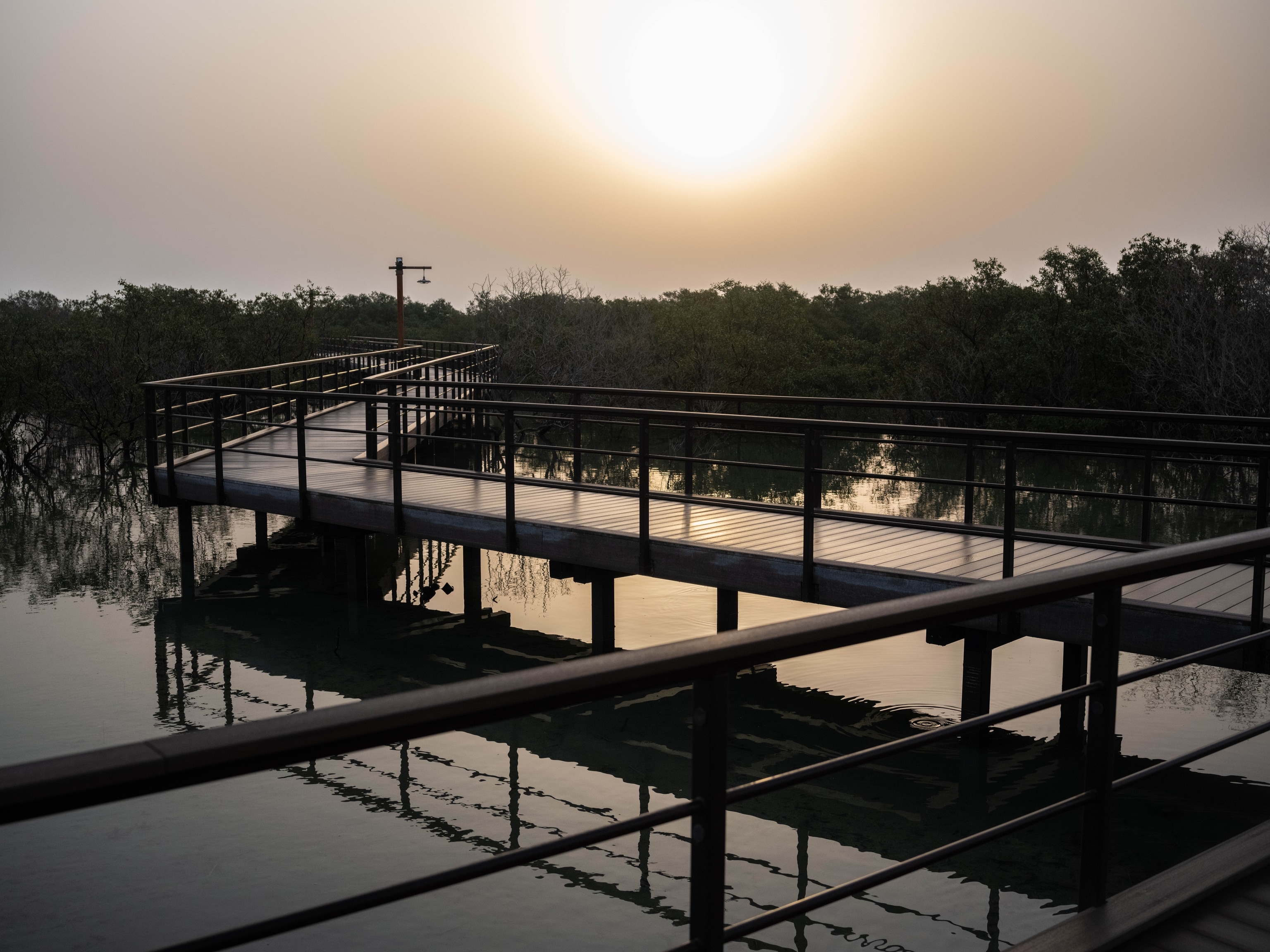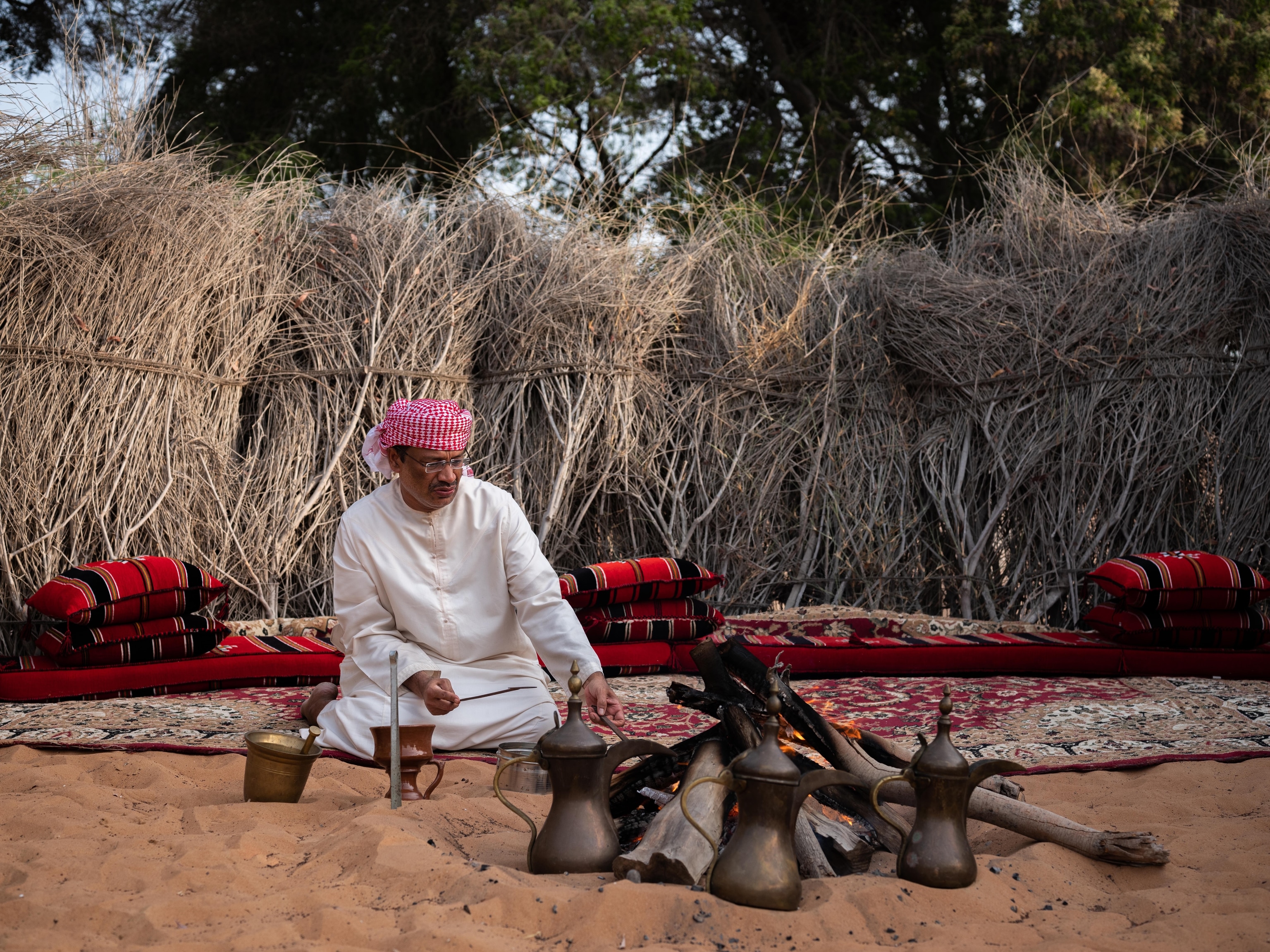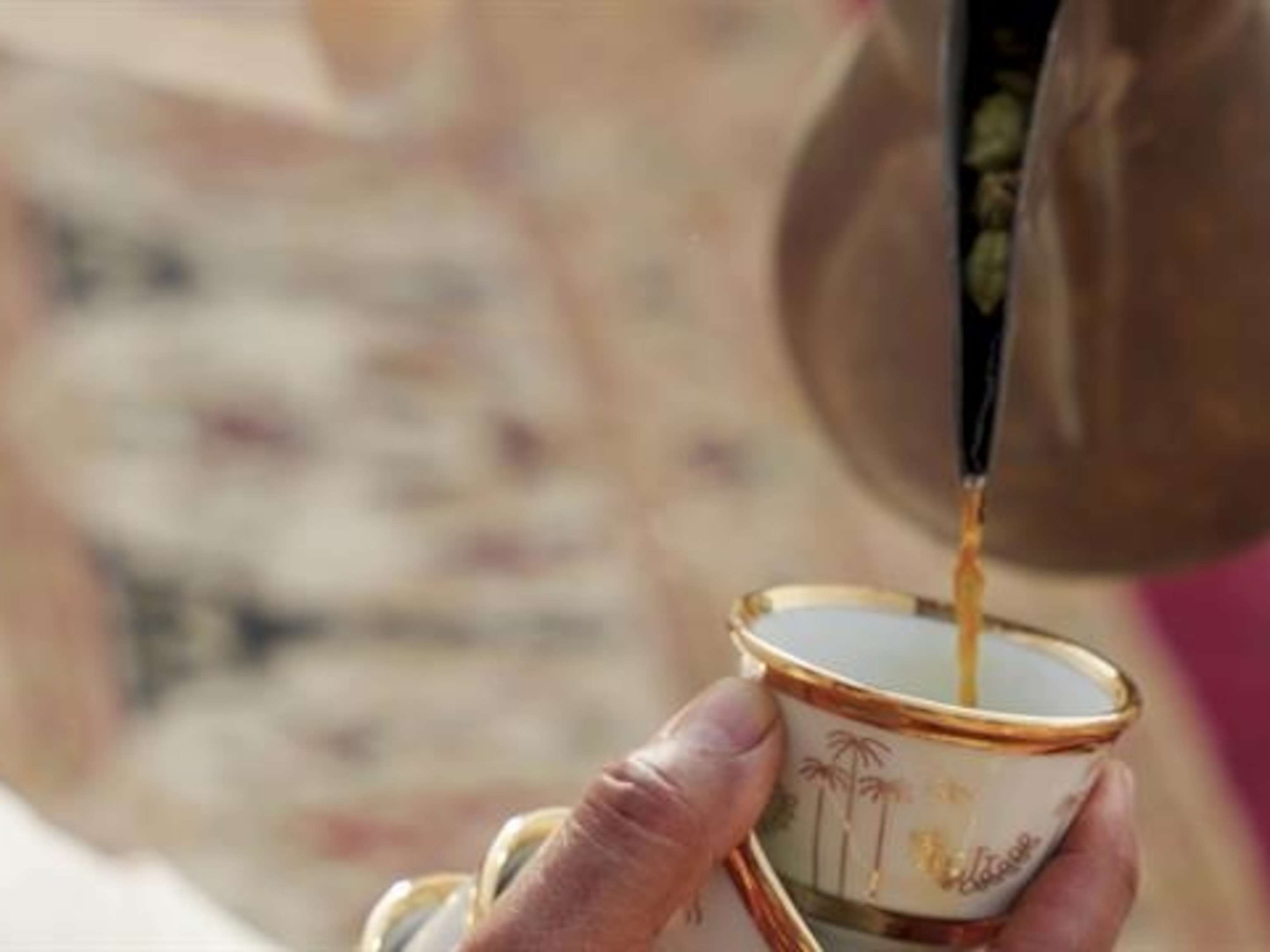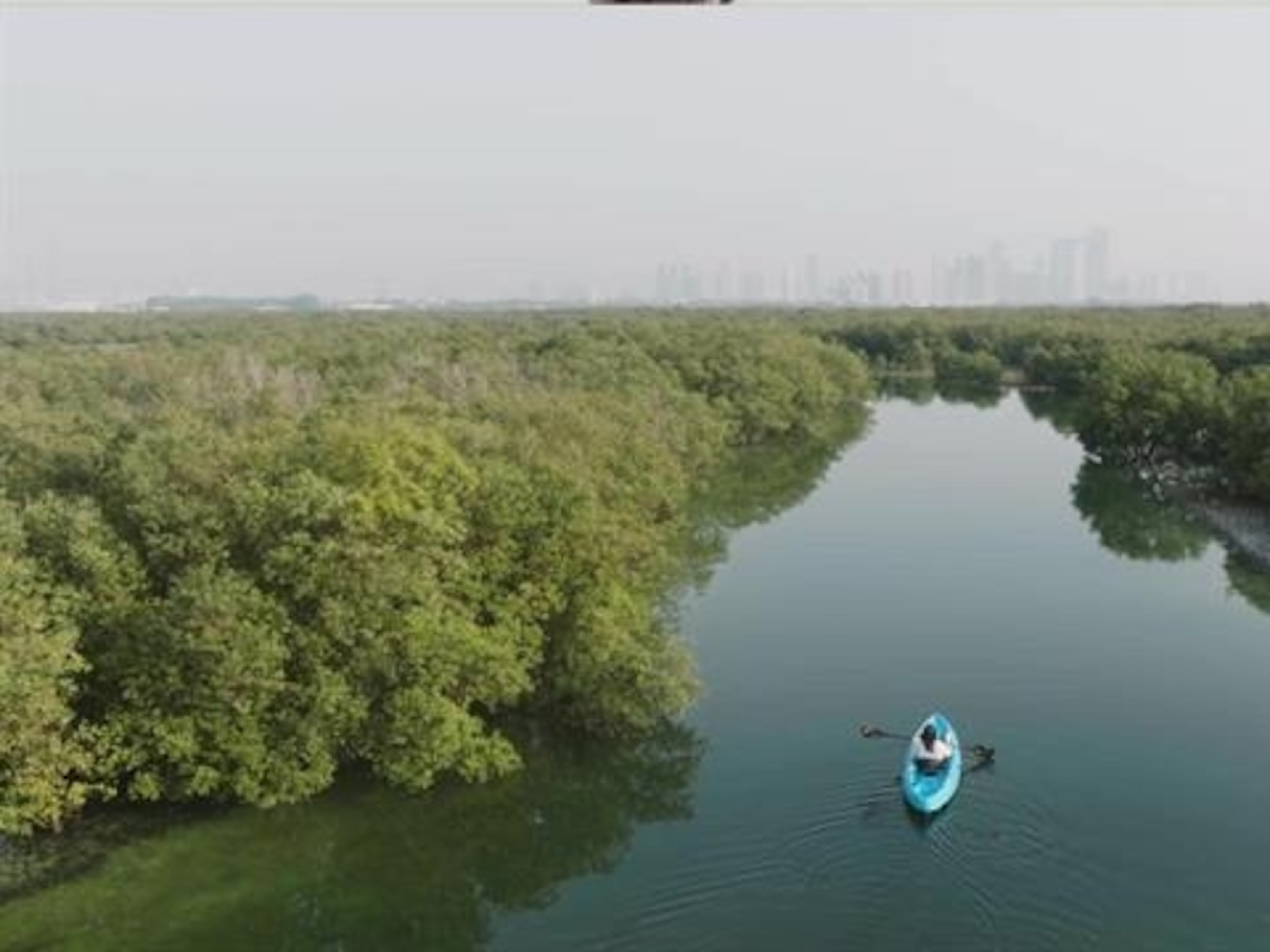An adventure across Abu Dhabi’s diverse landscapes
From luscious mangrove parks to craggy mountain ranges, there’s something for almost every type of outdoor enthusiast.
Some might be surprised to discover that Abu Dhabi is an emirate of diverse landscapes and that, contrary to a somewhat popular misconception, it isn’t only surrounded by desert. You can start your day overlooking the verdant greenery of the mangroves close to the city, spend the afternoon meandering through the Al Ain oasis, shaded by date palm trees, and round off with an adventure in the craggy, muted, and yet somewhat ethereal terrain of the Jebel Hafit Desert Park. Abu Dhabi is also home to hardy flora and fauna that have adapted to survive and thrive in the local climate.
Our first stop takes us to Jubail Mangrove Park, a forest featuring a fascinating tree known as the mangrove. Growing along muddy coasts, these distinctive trees are easily recognizable by their visible root tips that shoot up from the ground. It wouldn’t be an exaggeration to describe Abu Dhabi’s mangroves as the emirate’s guardians—after all, not only do these unique trees protect the coast from rising sea levels and storms, but they also capture and store carbon from the atmosphere.
While the mangrove park serves an important environmental function, it is also an ideal spot for those looking for time out of the city. Jubail Mangrove Park is sprawled across just over seven square miles of land. The best way to explore this area and see the trees up close is by kayaking; a rove through the tranquil channels of water that home the mangroves gives you the chance to fully explore the area from the most intriguing vantage point. While the park is primarily a mangrove sanctuary, depending on the time of year, you will also have the opportunity to see the variety of wildlife that live in the area, such as dolphins, dugongs, and sea turtles. If kayaking sounds too physically demanding, you can also choose to walk the boardwalk that zigzags the area and explore that way instead.

For those who cannot get enough of this special tree, there is also Mangrove National Park, a peaceful reserve where more than 60 bird species can be spotted. Similar to Jubail Mangrove Park, families, photographers, bird watchers, and outdoor enthusiasts can explore the area by kayak or on foot. Those visiting during the hot summer months can opt to enjoy views of the mangroves from afar instead at one of the lounges at the nearby Anantara Eastern Mangroves Abu Dhabi Hotel. While this may not be the quintessential great outdoors experience, sometimes lunch with a view will also do nicely.

Our next stop is away from the capital at an oasis that is believed to have irrigated, and thus sustained, one of the world’s oldest permanently inhabited settlements more than 4,000 years ago. Al Ain Oasis, the UAE’s first UNESCO World Heritage Site, is home to more than 147,000 date palm trees that green the desert and provide a respite for those yearning for cooler temperatures. The date palm tree has an enduring significance in the United Arab Emirates and the region: Able to withstand harsher conditions, the tree provides its well-known fruit and its fronds as material for traditional dwellings and various household goods. The date palm and its associated traditions were added to the UNESCO Intangible Cultural Heritage list in 2019, which further sealed the tree’s importance in the region.
Sprawling, shaded walkways provide the perfect opportunity to explore on foot or by bike. While making your way around the oasis you’re likely to come across its greatest curiosity: A traditional irrigation system called a falaj. Consisting of narrow waterways that carry fresh spring water from neighboring mountains, the falaj is a perfect example of human ingenuity. The system brings water from wells through the use of gravity, with water then funneled via a complex system of underground and surface channels to irrigate the oasis. This system was likely shared by Al Ain’s inhabitants thousands of years ago, so seeing it up close at the oasis, you can’t help but be impressed by the resourcefulness that led to its creation. An education center at the oasis offers visitors a glimpse into how the system works, housed in an eco-friendly building.
Nearby is our next and final stop, the Jebel Hafit Desert Park. Found at the base of the Jebel Hafit mountain, which at around 3,800 feet is one of the UAE’s highest peaks, the park offers a rugged landscape for people to explore. And there are many ways to get around here, so take your pick—you can use a mountain bike, ride a horse or camel, or go manual and use your own two feet to hike the various trails.
Happen to be a history buff? Your efforts will be rewarded not only with views of almost Mars-like landscapes but also with the opportunity to see 5,000-year-old tombs where the early inhabitants of Al Ain buried their dead. Artifacts found during excavations revealed trade links with ancient Mesopotamia, Iran, and the Indus Valley.

A trip to Jebel Hafit can be turned into an overnight adventure as camping is allowed on the premises. You can bring your equipment—or choose not to, as fully serviced camping is also available. But for so-called ‘glampers,’ a night spent in one of the park’s bubble tents is the ultimate treat.
If you still haven’t had enough of the great outdoors by this point, you can add Sir Bani Yas Island to your itinerary. Accessible by car, bus or ferry, the nature-based destination is teeming with animals easily observed through a lens. Some of the island’s free-roaming guests include the majestic Arabian oryx, giraffes, cheetahs, gazelles, and hyenas. The island will certainly help to further dispel any lingering misconceptions you may have about the diversity of the emirate’s wildlife and landscapes.



